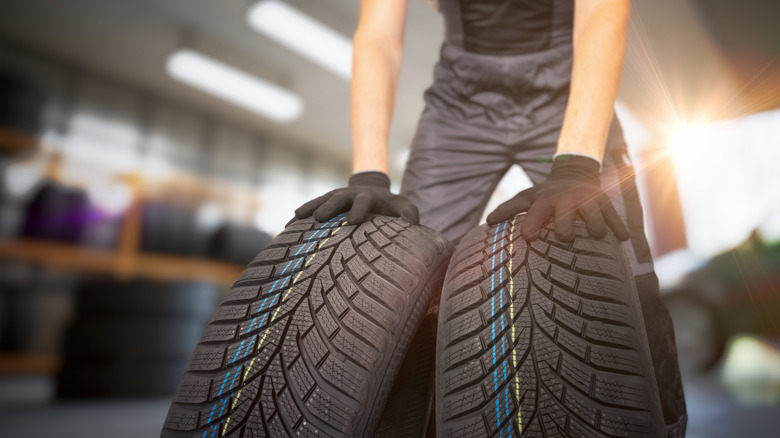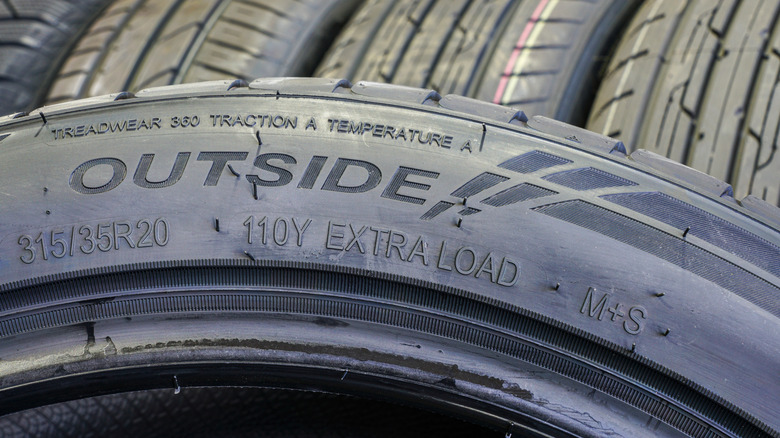The Two Different Sides Of Tire Sidewalls Explained - And Are They Interchangeable?
Tires play a vital role in both maximizing your car's performance and keeping you safe on the road. Throughout the tires' working life, keeping them properly aligned and rotated is important, and when it comes time to replace them, ensuring that you pick the right replacement is equally key. There are many different types of tires, with each one being best suited to a particular type of vehicle or a particular season.
If you want to find out more information about your car's tires, looking at their sidewalls is a great place to start. As well as displaying a manufacturer, model name, or model number, a tire's sidewall will usually have a variety of other markings that give information about its design and capabilities.
Some tires have markings that say Outside and Inside. These tires are directional or asymmetric, which means that their outer sidewalls are constructed differently to their inner sidewalls. The outer wall of the tire will usually have chunkier tread blocks to increase its rigidity, which helps the tire provide better traction during high speed cornering in dry conditions.
The inside tread is usually less rigid, with a groove design that helps it grip in wetter conditions. Directional and asymmetric tires can often be found on performance cars, while everyday passenger cars will often have symmetrical tires.
How to work out where a tire can be rotated
If you don't see Outside or Inside markings on your car's tires, it's likely that they are symmetrical. All symmetrical tires can be rotated to any other wheel on the car. However, if your tires are directional or asymmetric, there are a few restrictions worth keeping in mind.
Directional and asymmetric tires are only designed for one direction of travel — this is usually marked by an arrow on the tire's sidewall, and sometimes accompanied by the word rotation. They can still be rotated, but must be positioned on the same side of the car, so that the arrow's direction still matches the direction that the tires will be rotating.
After rotating the tires, it's always worth double checking that the Outside sidewall markings are still visible on the outside of the car, since rotating them incorrectly can significantly compromise the tire's performance.
It's best not to mix tread types when you're buying new tires, because having a mix of symmetrical and asymmetric tires on your car can negatively impact its handling. Alternatively, if you'd like to swap between tire types, you could (and should) always replace all four tires on your car. Advice varies about the optimal period between tire rotation, but generally, rotating them around every 5,000 miles is a safe bet. Manufacturers sometimes have specific tire rotation recommendations which can be found in your car's owners manual.

